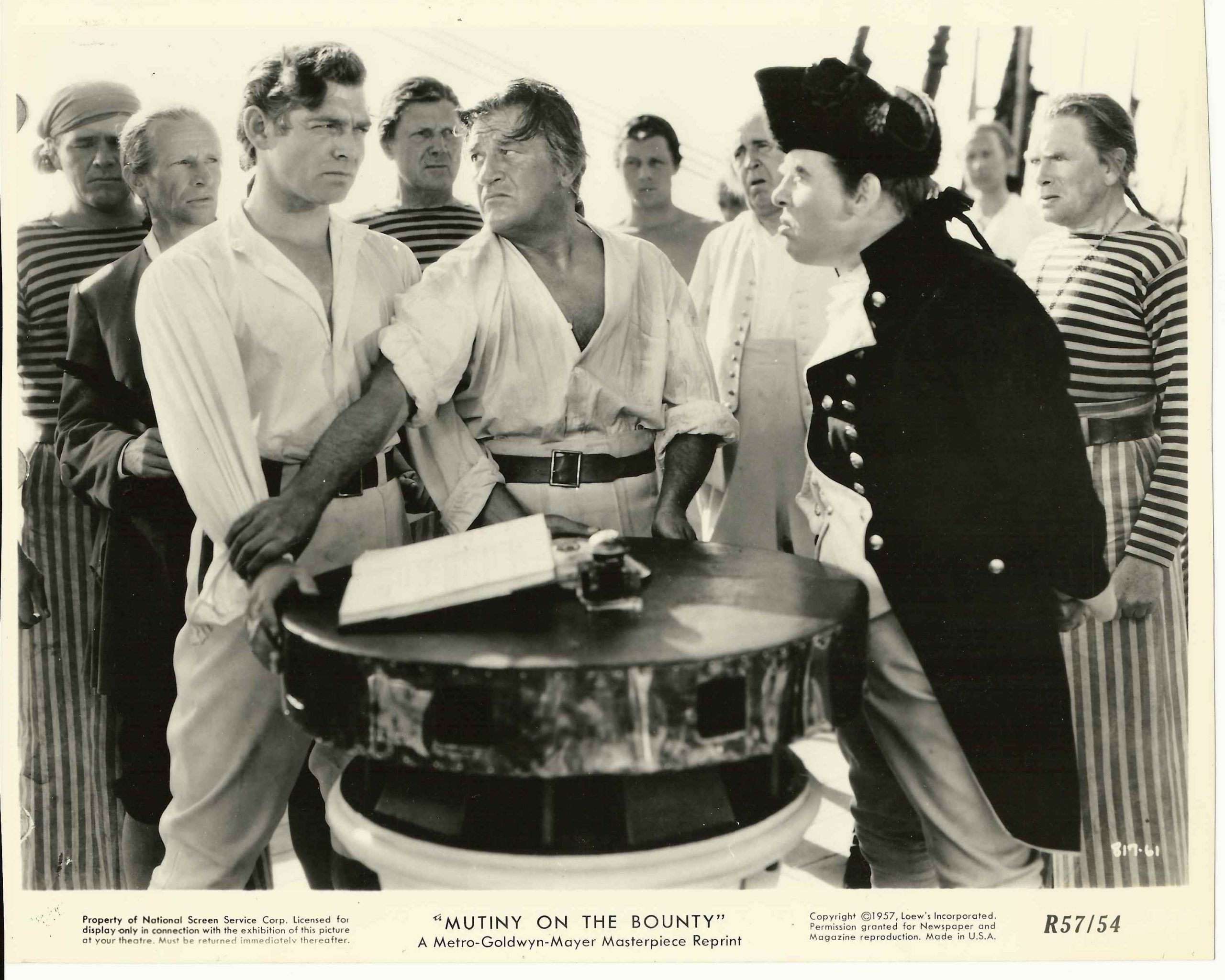A Great and Simple Theme
If you haven’t heard of the director Frank Lloyd, you’re not alone. Even though he directed, produced, and/or appeared as an actor in more than 180 films from 1912 through 1955, he isn’t well known. He is best remembered for his masterful direction of Mutiny on the Bounty (1935). Lloyd was the ideal choice to helm this true-life British naval mutiny from the late 18th century.
Born in Scotland, Lloyd watched his father install turbines and engines into all kinds of boats, including Tall Ships. His family traveled throughout Scotland, England, and Wales as his father looked for work. When Lloyd became a Hollywood film director, he searched for interesting tales about ships and the sea. Before being offered Mutiny on the Bounty, he had directed a surprising number of boat- and sea-related films, including The Sea Hawk (1924), Winds of Chance (1925), The Eagle of the Sea (1926), The Divine Lady (1929), Weary River (1929), and Cavalcade (1933).
Lloyd knew he could turn the incident into a rousing, yet deeply human motion picture. He later wrote:
When I finished reading Mutiny on the Bounty, I felt a definite excitement running through me. I knew I’d follow the simply history of a little ship – a character in itself – on a long journey. That aboard is a small group of men, courageous, sometimes sullen, always genuine. That the ship and the men reached Paradise and saw its beauty, were forced to leave that Beauty and mutinied. I knew that there was a thrilling adventure, a great and simple theme, the qualities of laughter and grief, and superb characters. And I knew that I could sell a combination like that to any audience.
The production was no small undertaking. It took two years to complete with a budget of almost two million dollars. Clark Gable had to be convinced to shave off his “lucky mustache,” because facial hair wasn’t allowed in His Majesty’s Navy at the time. Charles Laughton contacted the London tailor shop that had outfitted the real Captain Bligh 150 years earlier, in order to recreate Bligh’s uniform. The portly Laughton lost 55 pounds so he could match Bligh’s exact measurements.
The result is one of Hollywood’s best seafaring movies (John Ford’s The Long Voyage Home may be the very best). It was a huge hit for MGM, despite the staggering $1,905,000 budget. It went on to earn $4,460,000 at the box office and win an Oscar for Best Picture.
In 1962, the story was remade as Mutiny on the Bounty, with Marlon Brando as Fletcher Christian and Trevor Howard as Captain Bligh. There’s a strange link between the two movies. Movita Castaneda, who played Fletcher Christian’s Tahitian wife in the original film, later married the real-life Marlon Brando, the Fletcher Christian in the remake.
The story was remade yet again in 1984 as The Bounty, with Mel Gibson as Fletcher Christian and Anthony Hopkins as Captain Bligh. The 1984 film is the better of the two remakes. It also adheres more closely to the historical facts by portraying Bligh as repressed and authoritative, rather than mad and egotistical.
If you’ve seen only the usual print of this film on television, prepare to be duly impressed by the recently-released Blu-ray. It features a photochemical restoration of a recently discovered original nitrate camera negative. The print looks great with a consistently sharp image and smooth graytones. The audio is clear throughout, though there’s some shrillness in the louder portions, which is fairly common with movies from the early- to mid-1930s.
Both the Blu-ray and DVD include an interesting short, titled Pitcairn Island Today (1935), which shows the descendants of the crew and their living conditions on the island.
Mutiny on the Bounty
(1933; directed by Frank Lloyd)
Warner Home Video (Blu-ray and DVD)
Thursday, February 6 at 8:00 p.m. eastern on Turner Classic Movies
Reviews